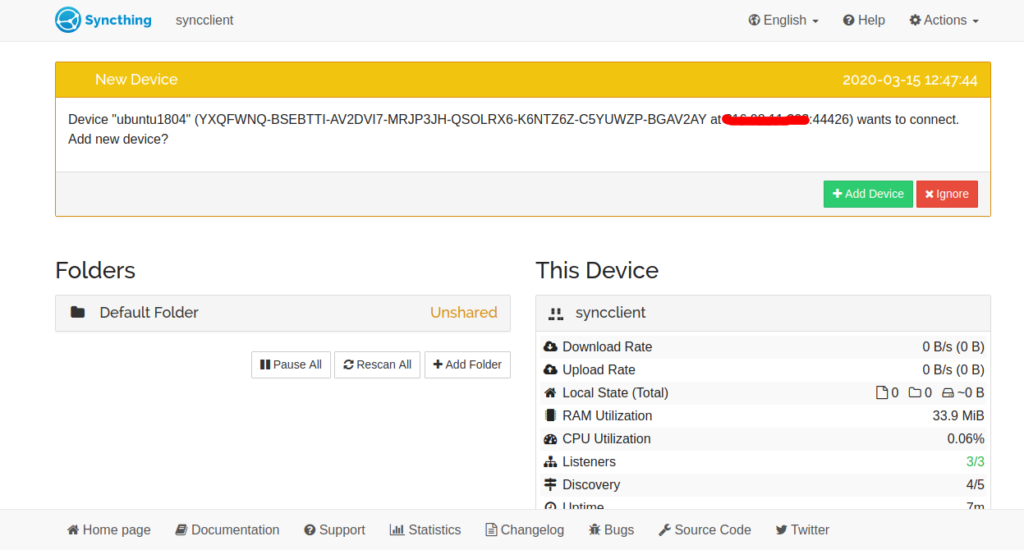

- #Ubuntu install syncthing update
- #Ubuntu install syncthing professional
- #Ubuntu install syncthing windows
01:41:25 INFO: Established secure connection to DEVICE-ID at .Y.Z:53007 => /var/log/upstart/syncthing-inotify.log /var/log/upstart/syncthing.log <= End result is that files are replicated between the two folders with a delay of just a few seconds $ touch /root/tdd_ansible/testfile
#Ubuntu install syncthing windows
$ service syncthing restart & service syncthing-inotify restartįinally, Windows service can be configured similarly via Syncthing Tray. $ head -n 10 ~/.config/syncthing/config.xml
#Ubuntu install syncthing update
$ service syncthing start & service syncthing-inotify startĤ - Update Syncthing configuration file # Update the default Sync directory to match your dev environment $ echo "start on starting network-servicesĮxec /usr/bin/syncthing" > /etc/init/nfĮxec /usr/bin/syncthing-inotify" > /etc/init/nf $ tar xvf syncthing-inotify-linux-amd64-v0.6.5.tar.gzģ - Configure upstart script to control Syncthing # Create a file for main service

# Unpack and copy inotify to the same directory as the main app $ echo deb Syncthing release | sudo tee /etc/apt//syncthing-release.listĢ - Inotify installation: # Choose the latest release for your platform # Add the "release" channel to your APT sources: Ubuntu package installation is an easy 4-step processġ - Syncthing installation: # Add the release PGP keys: Under /lib/systemd/system/ directory, you will find a rvice file. sudo apt-get update sudo apt-get install syncthing Using Systemd to Set Up Syncthing as a System Service The official Syncthing deb package ships with the needed systemd service file. I use a package called SyncTrayzor which contains the application itself, serves as a tray utility wrapper and also implements “inotify” which allows for file on-change synchronisation (BGP ip next-hop tracking anyone?) Ubuntu installation Update local package index and install syncthing on Ubuntu.
#Ubuntu install syncthing professional

I create and editįiles in a Notepad++ text editor and then transfer them over to the Linux VM. My development environment usually consists of a host machine running Windows and a development Linux “headless” virtual machine.


 0 kommentar(er)
0 kommentar(er)
